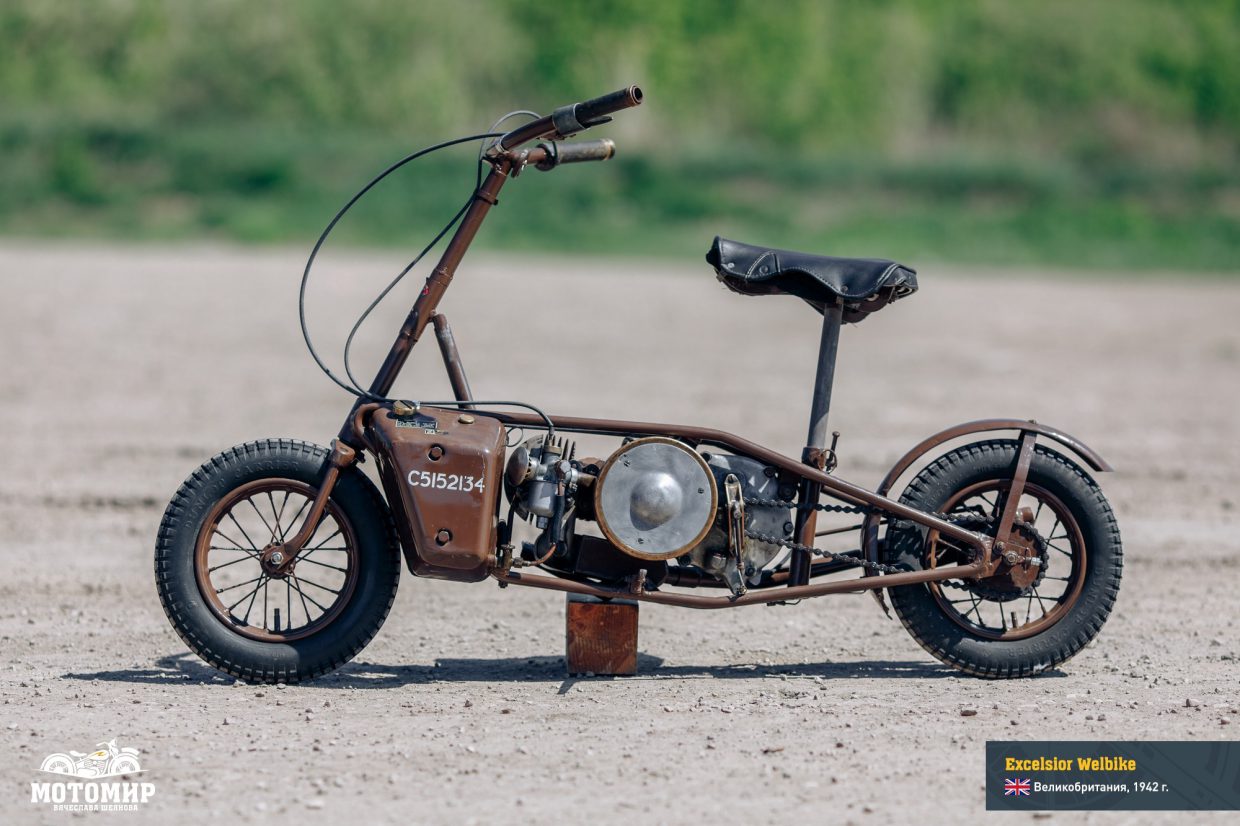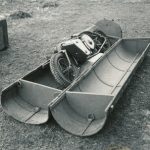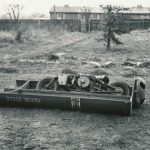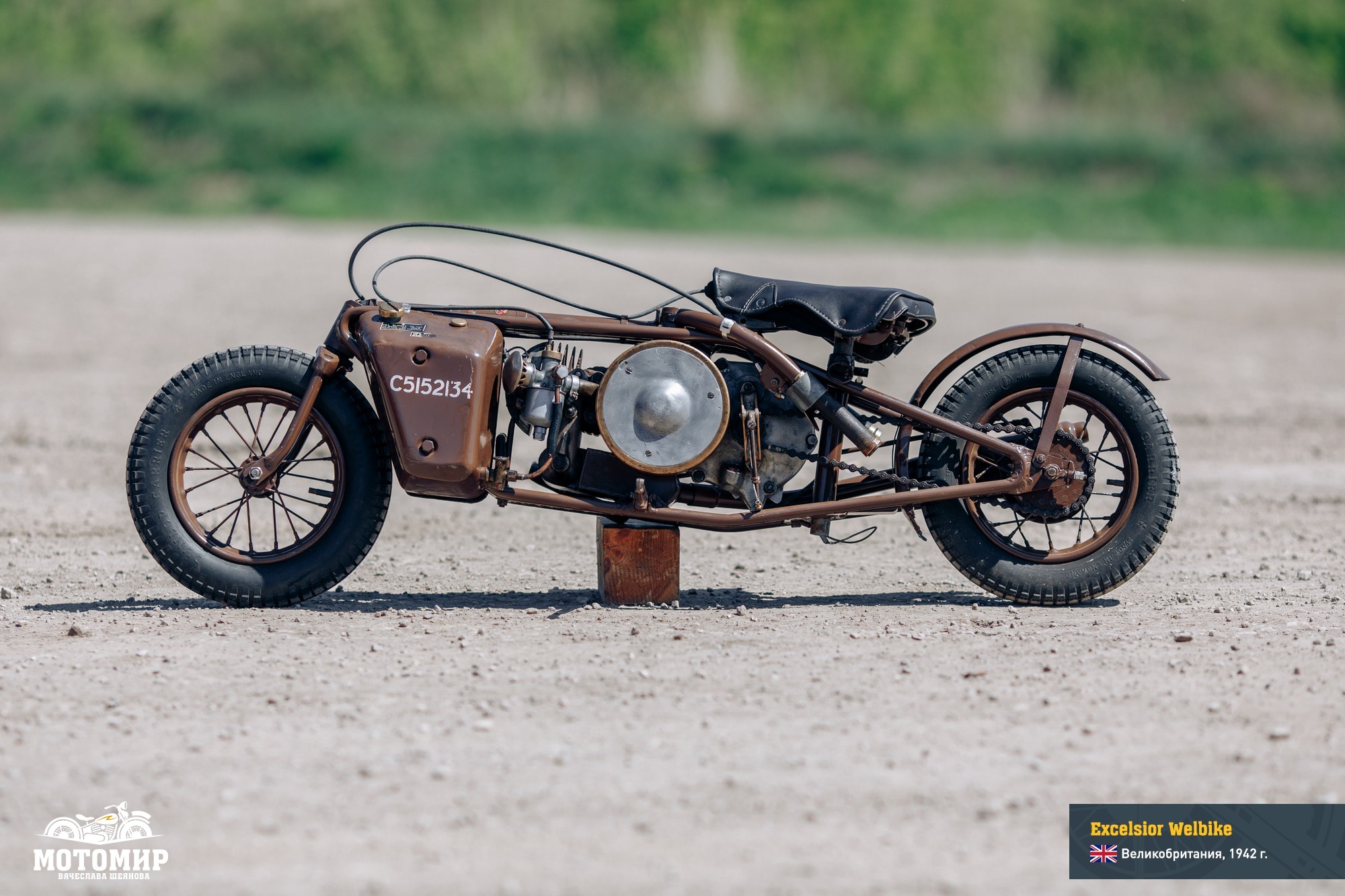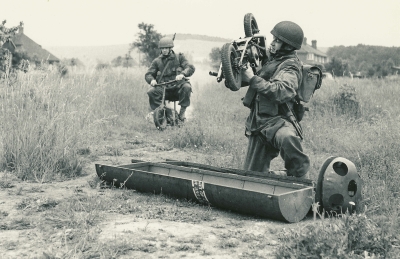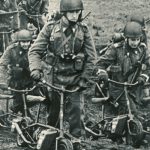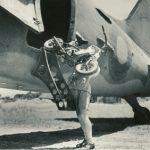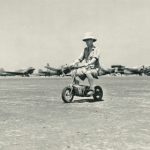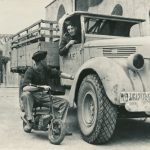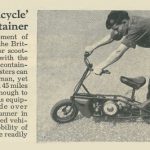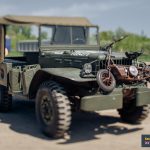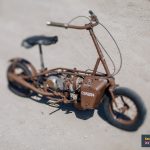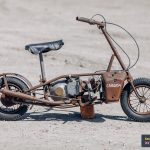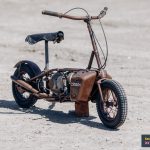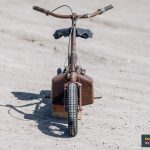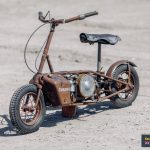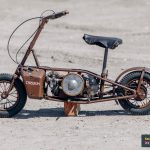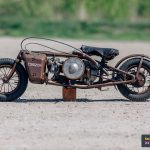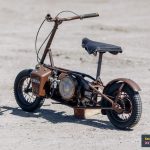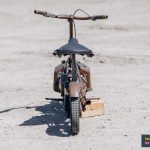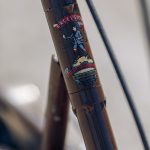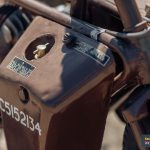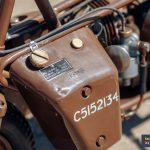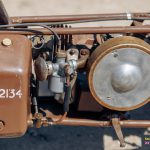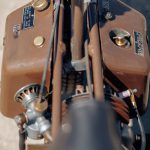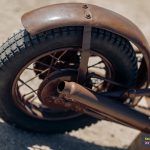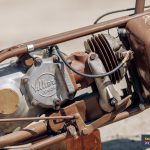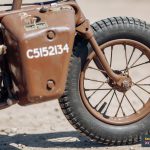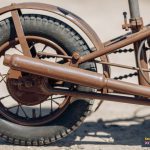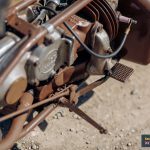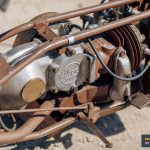This entry is also available in: Russian Chinese (Traditional)
Motorworld’s newspaper №82
Known colloquially as the “parascooter”, the Excelsior Welbike was one of the smallest military motorcycles produced and was certainly among the smallest military vehicles of World War II. It was designed with the intention of being air-dropped alongside parachute troops in order to provide mobility in the drop zone and was packed into a special air-drop container, in a partially folded condition.
Excelsior, based in Coventry, was a British bicycle, motorcycle, and car maker. It was the British first motorcycle manufacturer, starting production of their own ‘motor-bicycle’ in 1896. Initially, they had premises at Lower Ford Street, Coventry, and 287-295 Stoney Stanton Road, Hillfields, Coventry, Warwickshire before moving to Kings Road, Tyseley, Birmingham in 1921.
Originally a bicycle company making penny-farthings in 1874 under their original name: Bayliss, Thomas and Co, they later sold bicycles under the names of Excelsior and Eureka and changed the company name to Excelsior Motor Co. in 1910.
The Welbike, which derived its name from the British city of Welwyn where it was designed, first appeared in 1942 and was developed under the direction of Lieutenant-Colonel J.R.V. Dolphin. Manufacturing was undertaken by the Excelsior Motor Company of Birmingham who, before the war, had been producing small motorcycles. The engine was a 98cc single-cylinder two-stroke unit produced by Villers, mounted horizontally in the frame. The rear wheel was driven via a roller chain in a conventional manner but there was no gearbox, the rider having to make do with a single fixed ratio.
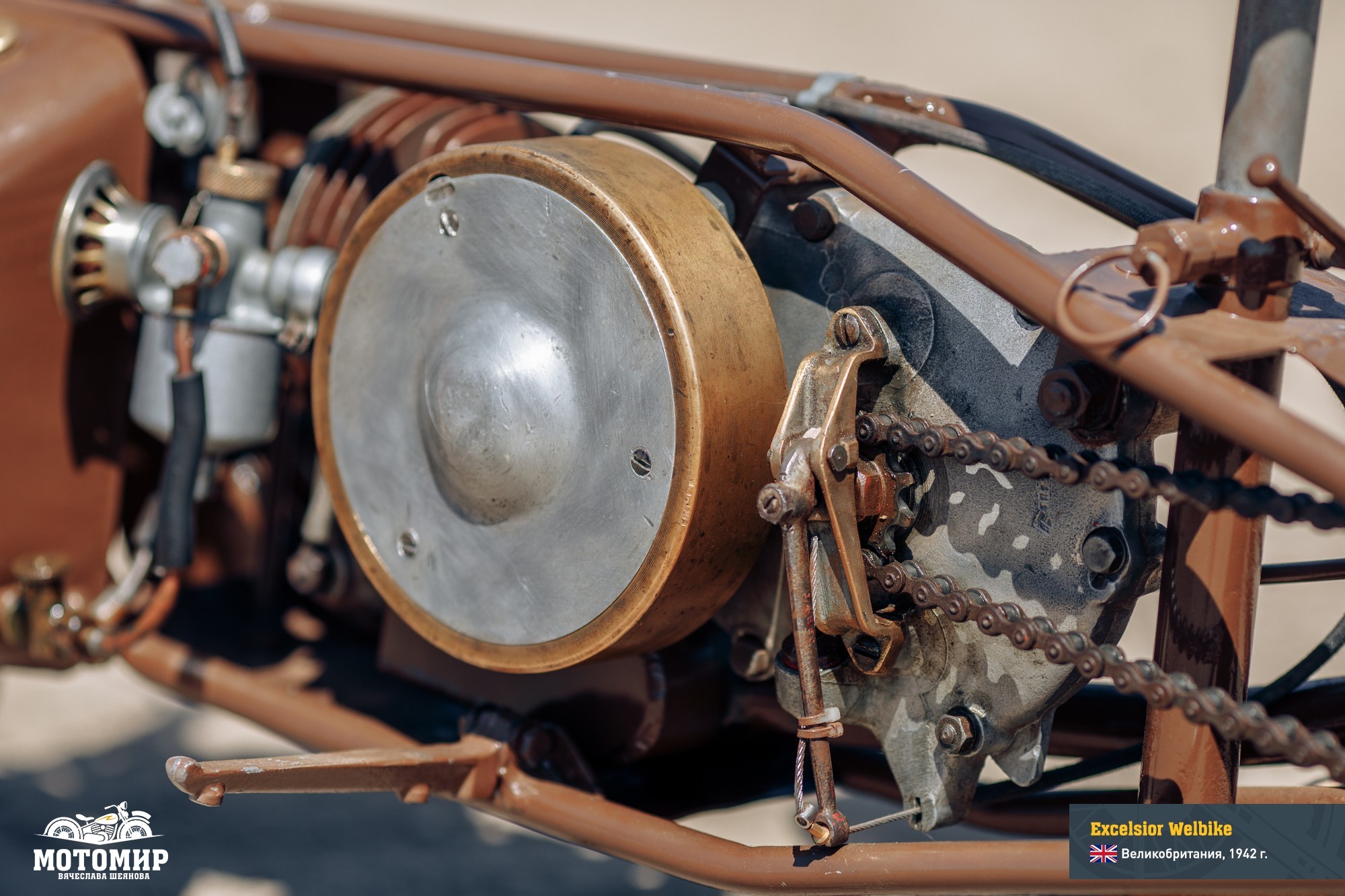
In order to fit the machine into the parachute container, the saddle was pushed down until it rested in the top of the seat tube. The handlebars were similarly folded back over the engine. It took little more than 10 seconds to make the machine ready to use after it had been removed from the container. It must be said that, without suspension of gears, and with just a rear brake, this machine was not suitable for traveling long distances but, nevertheless, it was capable of achieving 30mph on the flat.
There were three production versions of the Welbike. The first 1,200 were known as the Mark 1 and were really the developed version of the original prototype with tuned engines. These did not have a rear mudguard fitted, however. 1,400 Mark 2 Series 1 Welbikes were produced and these had a range of minor modifications, including the addition of the rear mudguard. The final batch of 1,340 was the Mark 2 Series 2 and had ‘saddle’ fuel tanks with a splash shielding between them and an improved filler cap, as the original design required the removal of the pressurization pump which was too time-consuming.
- Contract 294/23/S.789 dated 26 August 1942 for 1,000 (changed to 1,200) Welbikes Frame number 14 to 1214, War Department number C4658444 to C4659673. Received 15 October 1942.
- Contract 294/23/S.1649 dated 19 November 1942 for 1,400 Welbikes Frame number 1214 to 2613, War Department number C5152014 to C5153413. Received Feb 1943 to 14 March 1943.
- Contract 294/23/S.1946 dated 27 December 1942 for 1,341 (reduced to 1,241) Welbikes Frame number 2614 to 3954 War Department number C5153414 to C5154654.
- Contract 294/23/S.3662 dated 21 June 1943 for 7,778 (reduced to 1,241 then reduced to 0) Frame number 3955 to 5195 War Department number C5367454 to C5368694. CANCELLED
In combat situations, however, the Welbike could prove a liability as paratroops needed to get undercover as quickly as possible and had to find the Welbike containers before they could even start to assemble them. The difference in weight between a parachutist and a container meant that they often landed some distance apart, rather defeating the purpose, and some were captured by enemy forces or lost before they could even be used. The low power and small wheels also meant that they struggled to cope adequately with the often rough battlefield terrain so were often abandoned by troops who found it easier to continue on foot.
Many of the later models never saw action and were disposed at the end of the war, mostly exported to the USA where they were sold by a New York department store. The lack of a front brake meant that they could not be legally used on the road, so most were bought by farmers for off-road use.
The originator John Dolphin developed his ideas further and set up the Corgi Motorcycle Co Ltd. of which he was Managing Director, and had them produced as the Corgi by Brockhouse Engineering (Southport) Ltd., who had been manufacturing military trailers during the war. The Corgi scooter was powered by an Excelsior Spryt Autocycle engine and went into production in 1947. Most were initially exported to North America branded as the ‘Indian Papoose’ and not sold in the UK until early 1948, with some 27,050 being manufactured. The single-speed two-stroke engine was too slow, however, and even despite the high postwar demand for transport, lack of power and reliability problems meant it was discontinued in October 1954.
| Manufacturer | Excelsior Motor Company, Birmingham, Great Britain |
| Years of manufacture | 1942 – 1945 |
| Quantity produced, units | 3 941 |
| Price | |
| Today’s value |
| ENGINE AND TRANSMISSION | |
| Type | Single cylinder, 2-stroke |
| Engine capacity, cc | 98 |
| Bore and stroke, mm | |
| Engine rating | 1,5 hp at 3750 rpm |
| Sparking | |
| Carburetor | |
| Battery | |
| Clutch | |
| Transmission | 1-speed |
| FRAME AND WHEELBASE | |
| Frame type | |
| Front suspension | Rigid |
| Rear suspension | Rigid |
| Brakes | Front – none, rear – drum type |
| Wheel size | |
| DIMENSIONS | |
| Length, mm | 1 321 |
| Width, mm | 530* |
| Height, mm | 787, folded – 381 |
| Wheelbase, mm | 1 003 |
| Ground clearance, mm | 120* |
| Seat height, mm | 550* |
| Mass, kg |
31,8
|
| Gas tank size, l |
3,7
|
| Maximum speed, km/h |
48
|
| Range, km | 145 |





